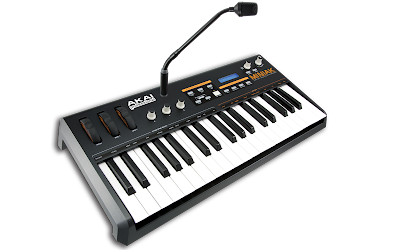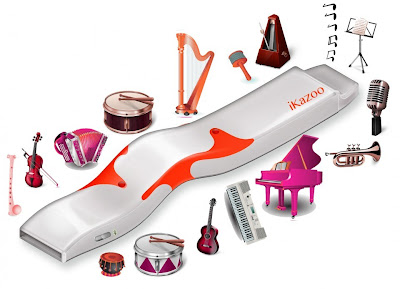 Roland Rhythm 330 up for auction via Loscha: "Quite similar to the TR-77 (Roland_TR-77-SERV.pdf I got those schematics from burnkit2600's site, thanks to him and whoever scanned them in originally).
Roland Rhythm 330 up for auction via Loscha: "Quite similar to the TR-77 (Roland_TR-77-SERV.pdf I got those schematics from burnkit2600's site, thanks to him and whoever scanned them in originally).It's a big, wooden veneer cased organ top plonker with loads of bass and great analog latiny percussion - claves and such. I've got them tuned to sustain a bit longer than manufacturer intended, but, this is changeable on the voicing board on some trimmers.
The voice board also has a "Snappy" control which goes from very mellow to quite outrageously distorted and over-rides the rest of circuit to fizziness.
I live in Melbourne, Australia. The going rate seems to be between 300-450 Australian for these. Am asking for $350 Australian. Am not a greedy man. Based on units that have sold lately on ebay and privately, it seems this is the 2nd rarest TR drum machine, after perhaps the 77. No-one had sound samples online, which is something. I'm hoping to rectify, and to eventually make a more complete recording of the patterns at all tempi, etc.
I've made a modification to the unit which was needed and unobtrusive. The Metronome switch only had one function in real life; To convert "Swing" into "Metronome". I have used some spare terminals on this as a speaker cut switch. The only way you can hear metronome is through both the speaker and the output jack, in all other patches, the Metronome Off/On switch mutes the speaker. The speaker is quite loud, and pumps a lot of air (big old oval speaker). This allows you to hear the pure sound of the unit through your amp/ effects/ compressor/ Funk-A-Duck or whatever else you have.
If anyone has the service manual or schematic, I'd be indebted if they'd email me a copy or a link to it, also.
The front of the case. The damage on the top left of the machine is that the veneer has been pushed back and has creased a little bit, over a slight dent in the wood.
 Front of machine is to the left. Big Speaker in the back. Power supply regulation board to the left. Transformer to the right. In the front we have the clock and divide down board. This is almost identical to the TR77 board, as above. The switching logic is below the metal plane everything is resting on. This is made up of diodes and such attached to the multi-pole switches. No roms are used, it's all discrete logic.
Front of machine is to the left. Big Speaker in the back. Power supply regulation board to the left. Transformer to the right. In the front we have the clock and divide down board. This is almost identical to the TR77 board, as above. The switching logic is below the metal plane everything is resting on. This is made up of diodes and such attached to the multi-pole switches. No roms are used, it's all discrete logic.The Sound Board and obverse of Sequence Logic Board. You can see the trimmers here. The one on the top left all on it's own is "Snappy". The three on their own row are all kick drum related (tune, resonance of circuit, and mix volume). The kick is very useful. It sounds like an 808, with lots of sine-boom. It doesn't have a percussive attack noise burst like a 909. The other trimmers are tune and resonance and pitch for the tuned percussion (Claves, Toms). In my sound examples, I have the decays set quite long, mostly just before the point of resonance, as I was using it for slower pieces most recently. The circuit slides out of the wooden sleeve with 4 screws on the bottom.
I'm certain that the rubber feet on bottom of unit are not original, they are "chocolate" (square, beveled) kind, not round ones as I would imagine would have been.
A few last notes:
The tempo light only triggers on the first beat of the bar. It is red. A globe in a red filtered bezel, not an LED, although you could put a 5mm UV LED in there if you wanted, I think it might fit. In fact, I'm happy to throw one in if you want to try it. I've tried to get the tempo calibrated roughly to the markings on the front panel, however, there are 2 adjusters on the clock board, you can make it go uselessly fast if you so wish. A simple turn of the trimmer.
http://www.loscha.com/images/TR330-AllBeats.mp3
Quickly cycling through all patterns from left to right. About 2 bars of each.
http://www.loscha.com/images/TR330-Transitions.mp3
Slowly turning the balance knob from left to right, on "Mambo".
http://www.loscha.com/images/TR330-MamboSwingStack.mp3
First Mambo, then Swing, then both of them stacked on top of each other. You can depress multiple buttons for combinatorial sounds.
 it's got switchable line voltage around the back along with Audio out and the Start/Stop Footswitch jack -- ."
it's got switchable line voltage around the back along with Audio out and the Start/Stop Footswitch jack -- ."













































































